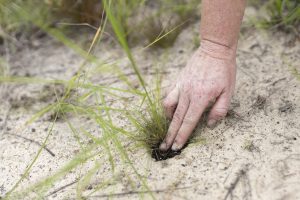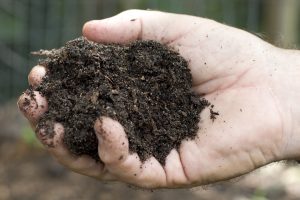Many of us experienced our first freezing temperatures in the Panhandle last week. As we welcome winter, here are some helpful resources to prepare your plants when temperatures dip in the months ahead:
Frost in the Panhandle? Practical Tips for Protecting Your Garden
Cold Protection of Landscape Plants EDIS
One tip you’ll often see in these recommendations is to water your plants before a freeze. At first, this might seem counterintuitive, but wet soil can actually help your plants weather freezing temperatures for several reasons.
Water’s ability to absorb and hold heat—known as high specific heat—makes it a powerful tool against cold stress. Dry soil contains air spaces that don’t hold heat well. By watering your soil, you replace those air pockets with water, which absorbs more heat during the day and releases it slowly at night. This helps keep the soil and roots warmer than the surrounding air. Covering plants with sheets and frost cloth can help trap this warmth around the plants.

Dehydration from freeze damage can make leaf tissue look similar to drought stress. UF/IFAS Photo by Cat Wofford
Beyond heat retention, water also reduces the effects of cold stress. Both freezing and drought conditions cause plant cells to lose water, leading to dehydration. Water is essential for many plant functions including photosynthesis, nutrient transport, and maintaining structural support of the plant. Good water availability within the plant before the freeze helps reduce the water stress associated with cold damage. However, watering right after a freeze will not provide the same benefits because root activity slows in the cold weather.
For best results, water the soil in the morning before a freeze, focusing on the soil, rather than the leaves, as wet leaves are more prone to freeze damage. During fall and winter, plants generally require less frequent watering, so check the soil moisture before watering to avoid overwatering. Standing water can harm roots and increase stress on the plant.

Get familiar with your soil by checking moisture level before you water. UF/IFAS Photo by Tyler Jones
- Let’s Scout the Garden - October 23, 2025
- Non-GMO Seeds at the Garden Center? They All Are! - September 25, 2025
- Should I Prune My Blueberries? - July 31, 2025


